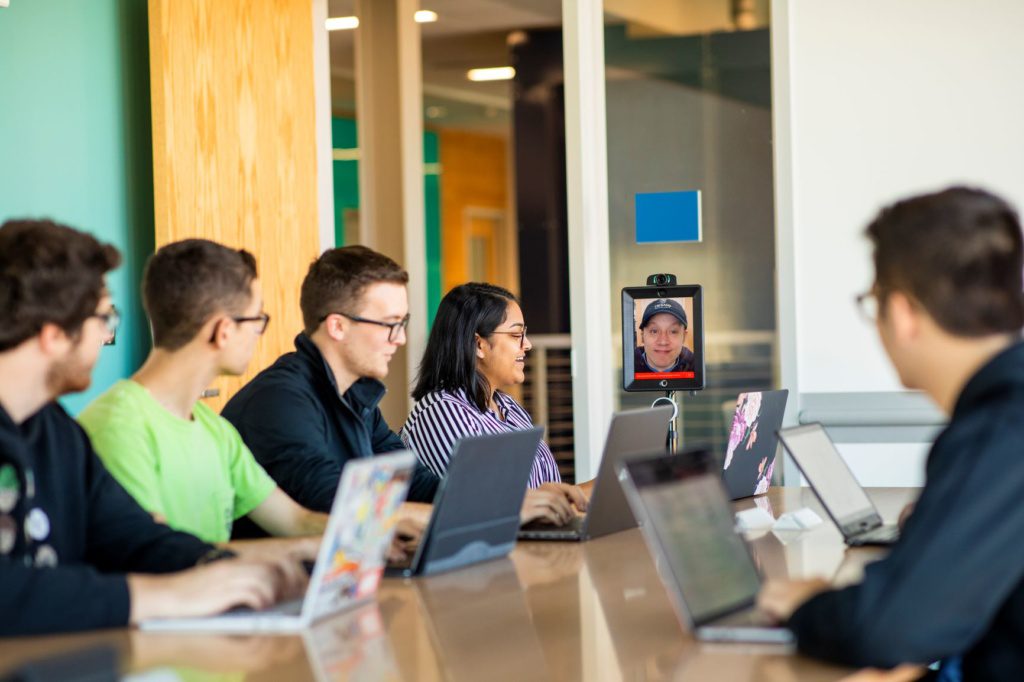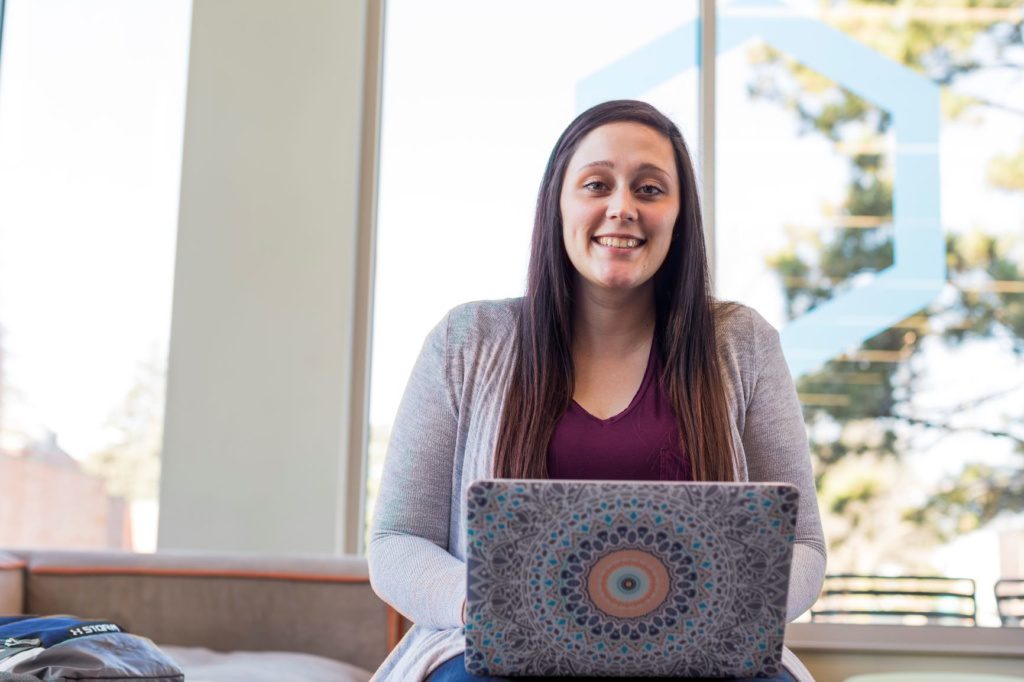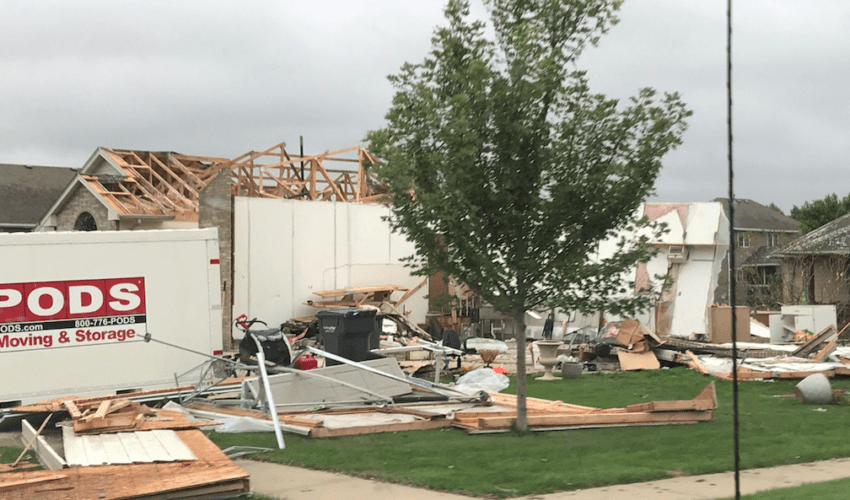Teaching teachers to educate with e-learning pays off during pandemic
May 6, 2020
This paid piece is sponsored by Dakota State University.
If you were to walk into a classroom 20 years ago, you would most likely find a TV, a chalkboard or whiteboard, and an overhead projector in addition to plenty of books, notebooks and pencils.
But in the modern classroom, these features have been replaced with iPads, laptops, tablets, SMARTboards, digital textbooks and more.
In fact, 63 percent of K-12 teachers use technology in their classrooms on a daily basis because it offers students various opportunities for a more personalized and higher quality education. In addition to offering technology experiences inside the classroom, teachers now have evolved their teaching methods to fit an E-Learning lifestyle.
E-learning is the act of delivering content through electronic technologies to access educational curriculum outside of a traditional classroom.
For students at Dakota State University, e-learning has long been integrated in classes as a way to accomplish homework and connect with faculty and peers. But for DSU’s College of Education in particular, e-learning has become an essential tool in which students are highly trained.
“Our education majors have technology lessons, applications and implementations integrated throughout their curriculum and are required to use technology in their daily lessons,” said Dr. Scott Klungseth, assistant professor of physical education and exercise science.
With exposure to these lessons and applications, DSU students become well equipped with a wide variety of educational technologies and e-learning tools such as Flip-Grid, video/screen casting tools, Google Classroom and SeeSaw.
These practices give them the ultimate advantage on how to incorporate these technologies into highly effective and educational e-learning environments.
Noah Salmen, an elementary education major, has experienced e-learning firsthand.
“DSU’s taught me ways to implement e-learning into my future classroom through online classes and tech tools used by professors. They teach the skills needed for e-learning and stress that technology is always changing and that educators need to be flexible,” said Salmen, a junior.
But what exactly does e-learning entail?
E-learning allows students of all ages to access different ways of learning, no matter their location. With various topics and the ability to work at a self-paced speed, most e-learning objectives are goal-driven and take shape in many forms.
Customizable to fit each specific grade, e-learning also can take the form of virtual worksheets, simulations, discussion boards, apps to turn in and publish homework, videoconferencing with tools such as Zoom, e-libraries and much more.
“Educators are using two common approaches. The first being synchronous learning, when all those involved are learning and teaching at the same time. The other being asynchronous, where learning and teaching can occur at different times for each participant,” Klungseth said.
Additionally, e-learning provides differentiated instruction based on children’s needs. It gives them opportunities to practice working with technology in any subject. It also allows for the repetition of learning content, the ability to study for assessments and the opportunity to review previously covered content.
Though there are many advantages for both teachers and students, e-learning also can present challenges.
One challenge is the notion that teachers need to constantly assess whether the tools they’re using are meeting the needs of all their students, especially when it comes to different types of learners and students with disabilities.
“It’s important to ensure students are getting the right amount of support based on their needs and can share what they’ve learned,” said Katie Anderson, assistant professor of reading and language arts.
Those with disabilities can access e-learning much like any other student and, with the help of assistive technology such as audiobooks, text-to-speech tools, talking calculators and phonetic spelling software, students can complete homework assignments and other tasks much like they would in a general classroom.
Covid-19’s effect on education
So how is e-learning implemented when there’s a national pandemic?
“Many teachers are sharing content on management systems like Google Classroom,” Anderson said. “This allows students to demonstrate what they are learning using an online platform.”
Like Anderson and Klungseth, educators across the nation are aware that many students may not have wireless capabilities or access to electronic devices. Because of this, schools are loaning out devices to students or providing them with physical copies of materials.
They’re also aligning their approaches to e-learning based on teacher experience, student experience and schedules.
In fact, teachers everywhere have had to adapt their lesson plans at a moment’s notice and quickly learn processes for e-learning while moving their academic content online, which has been challenging for some educators.
“Teachers deserve respect for all the work they’re putting in,” Klungseth said. “A key aspect on the success of teachers is the support system that their colleagues and districts are putting in place. Luckily, many districts are still getting together virtually for their ‘team time’ and collaboration time, which allows support in the e-learning environment.”
Not only is this support meant for practicing teachers, but for student teachers as well.
When COVID-19 hit, many student teachers were in the middle of their first or second semester of a yearlong student teaching residency but were able to stay the course and help their cooperating teachers move to an online platform.
“The College of Education has been humbled with the way our students have embraced the transition to an online learning platform with flexibility and grace. They’ve taken this experience to heart and will reflect on it for years to come,” said Megan Schuh, director of field services in the College of Education.
DSU students are helping cooperating teachers by creating and delivering content, assessing learning experiences of students and creating and providing instructional videos.
With this unique experience at the forefront of their student teaching residency, many student teachers will graduate with a good idea of what it means to be a lifelong learner with the ability to adjust curriculum in the blink of an eye.
“Although I’m not yet a student teacher, I know it’s imperative as educators to remain flexible and open,” Salmen said. “We need to have the skills necessary to adjust our lesson plans at a moment’s notice and the resources to do so. We need to know how to implement these things, where to get help and how to help others when needed.”
Student teachers also have learned how to be flexible, stay in daily contact with students and parents, and reassess lesson plans to fit their e-learning environment – no matter where that learning occurs.
“It’s challenging to know just how effective the e-learning environment is for our K-12 students as well as our college students,” Anderson said. “But educators are very resilient. They’re doing the best they can while providing support and direction for students navigating this new environment.”











